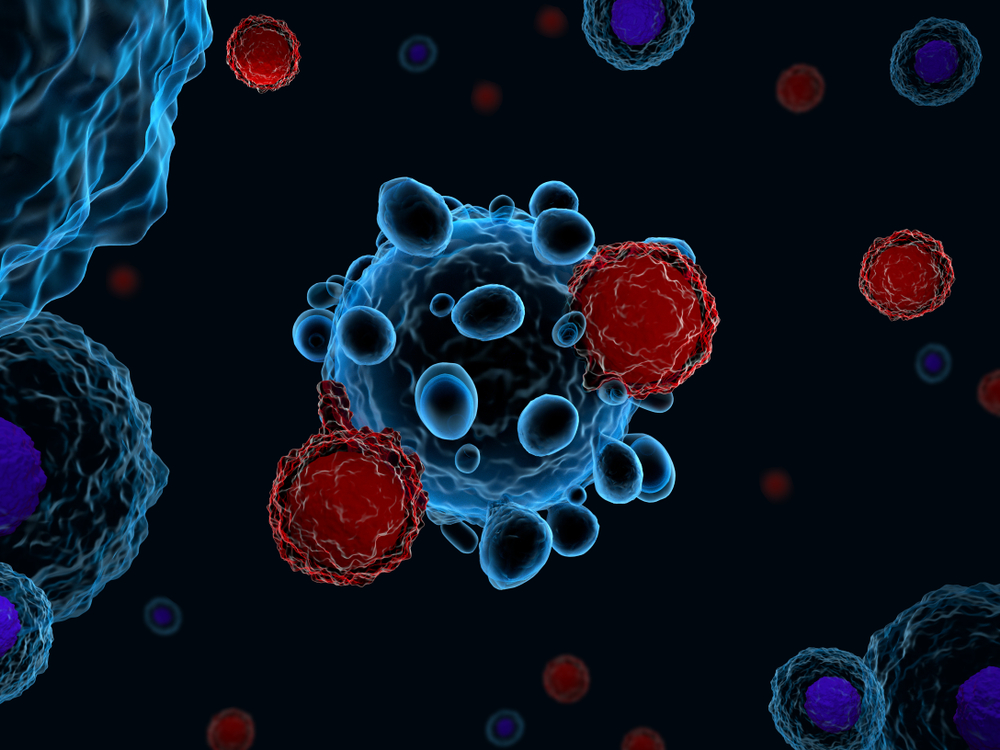Gilenya Works to Treat RRMS by Specifically Targeting B-cells and T-helper Cells, Study Finds

Treating people with relapsing-remitting multiple sclerosis (RRMS) for one year with the immune-modulating therapy Gilenya (fingolimod) reduced the numbers of antibody-producing B-cells and of T helper cells, a study finds.
While the proportion of most immune cell types was reduced, regulatory T-cells (Tregs) that suppress autoimmune responses were relatively preserved with Gilenya treatment, the researchers said.
These findings mapped, in detail, the alterations in white blood cell populations following Gilenya treatment.
The study, “Treatment effects of fingolimod in multiple sclerosis: Selective changes in peripheral blood lymphocyte subsets,” was published in the journal PLOS ONE.
Several disease-modifying treatments for MS work by modulating or suppressing the immune system in various ways. Gilenya, marketed by Novartis, is one such therapy, approved for the treatment of people with RRMS ages 10 and older.
Gilenya acts to retain lymphocytes (white blood cells) in the lymph nodes, preventing them from circulating around the body and reaching the brain and spinal cord. This reduces inflammation in people with MS. In a clinical trial supporting its approval, Gilenya reduced the number of circulating lymphocytes by around 70%.
Despite its success, how Gilenya treatment directly affects the specific types and numbers of lymphocytes has not yet been described in detail.
Thus, investigators at the Linköping University in Sweden mapped out the absolute numbers of white blood cell populations in MS patients who had been treated with Gilenya for one year.
A total 19 people with RRMS, between the ages of 26 and 50, were recruited for the study. Of these, 12 were women and seven were men. All patients started on 0.5 mg of Gilenya per day, and blood samples were withdrawn before treatment, and after around one year (between 11 and 15 months). Blood samples from 18 blood donors without MS also were collected as controls.
Lymphocyte cells in the blood samples were identified and counted using a technique known as flow cytometry, which uses light to differentiate between different cell types in a mixture of cells. All patients were examined by a neurologist and assigned a score reflecting disease status. Brain magnetic resonance imaging (MRI) also was performed before and after the treatment period.
The results showed that, before treatment, the types and numbers of lymphocytes between patients and the healthy controls were similar.
“The baseline numbers of all major lymphocyte subpopulations were comparable between MS patients and healthy control individuals (no significant differences were observed),” the researchers said.
However, as expected, treatment with Gilenya for one year significantly reduced the total number of lymphocytes in the blood of all MS patients analyzed.
Two types of immune cells were particularly reduced by Gilenya treatment: B-cells and T helper cells (Th cells). B-cells — lymphocytes that produce antibodies — were reduced from 15% to 3.7%. Meanwhile, Th cells — which control the activity of other immune cells — dropped from 52% to 15%.
Cytotoxic T-cells, which directly attack and kill invaders, also were found to be significantly lower.
The least affected cell population were the so-called natural killer cells (NK cells), which play a role similar to cytotoxic T-cells by rapidly targeting virus-infected cells. NK cells have the ability to kill tumor cells without any priming or prior activation, unlike cytotoxic T cells, which need priming by other cells.
The proportion of NK cells did not decrease with Gilenya. In fact, it actually increased from 9% to 41% after one year of treatment.
A detailed analysis also found a significant reduction in both naïve and central memory Th cells. Naïve Th cells are those that have yet to be activated by an immune response, while central memory Th cells recognize and respond to previously encountered bacteria, viruses, or cancer cells.
The overall numbers of regulatory T-cells — the Tregs suppressing the activity of other immune cells to prevent autoimmune disease — also were decreased with Gilenya treatment, but to a lesser extent than other T-cell populations. While some subtypes of naïve Tregs were reduced or preserved, in contrast, the proportion of memory Tregs increased after Gilenya treatment.
A comparison of patients who were experiencing active disease with those who were not found few significant differences in immune cell profiles. However, before the study began, those without active disease had lower numbers of activated Th and NK cells, compared with those with active disease during treatment.
“We confirm that fingolimod [Gilenya] treatment exerts marked effects on both lymphocyte absolute numbers, as well as their proportions in peripheral blood of MS patients,” the researchers said. “The clinical benefit of this therapy may not only result from an overall lymphopenia [low levels of lymphocytes], but could also be related to specific alterations in the distribution of immunoregulatory lymphocyte subsets.”
“Our findings indicate that even though fingolimod [Gilenya] treatment profoundly reduces the number of peripheral memory lymphocytes, significant parts of the immunological memory seem to be preserved,” they concluded.






